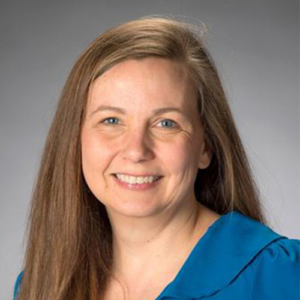Parental School Choice Victories are Worth Celebrating. Now Comes the Hard Part
Garnett & McShane: Many ed reform programs fell apart when implementation failed. New report spells out what ESAs must do to succeed.

Get stories like this delivered straight to your inbox. Sign up for The 74 Newsletter
For school choice advocates, 2023 has been a year of dizzying highs. Never before have so many states enacted so many far-reaching parental choice programs. Arkansas, Florida, Iowa and Utah join Arizona and West Virginia as states with universal or near-universal education savings account programs, which allow parents to spend a portion of the public resources allocated for their children’s education for private school tuition and other qualified educational expenses. South Carolina adopted a generous-means tested ESA, Indiana expanded its voucher program to near-universal eligibility and Oklahoma enacted a universal refundable tuition tax credit. Other states seem poised to join the parental choice roster in the near future.
But the work of policy reform is just beginning. And, as we argue in a new Manhattan Institute report, there is a tremendous amount of work to do, especially with respect to ESA programs.
The history of education reform is littered with programs that were announced with great fanfare, only to fall apart because of a failure to attend to the crucially important challenge of implementation. Legislation is simply words on a page. It is the administration of these programs, and tens of thousands of private decisions by would-be participants — families, schools, other providers — that determine whether they succeed or fail.
Our report highlights four areas that those implementing ESA programs must attend to.
First, resist the temptation to declare victory when a program is passed. ESAs are wonderful in theory, but they are not a panacea. Difficulties in implementation have arguably hamstrung the effectiveness of private school choice programs in the past, and ESAs are even more complex. Attending to these issues is critical to ensuring that they will work in the lives of real families. Our report discusses several categories of implementation challenges.
Perhaps the most important decision needs to be made quickly: Who administers the program, and how? Unlike earlier school choice models, ESAs are more than scholarship programs. Families can use ESA funds for a range of expenses, and with numerous providers. This makes an efficient, user-friendly and low-glitch platform where families and providers can conduct transactions essential. Without this, the whole program will fall apart.
Second, don’t put the accountability cart before the administration horse. Already, even many ESA supporters cannot seem to help focusing first on how to regulate and punish wayward providers and participants.
While avoiding fraud is important, at this stage, it shouldn’t take administrators’ eyes off much more pressing issues like ensuring that parents’ efforts to enroll their children go seamlessly, and making sure that providers are paid promptly. These are not small tasks. For example, in the week after Iowa’s ESA program opened May 31, the state received over 15,500 applications from families wishing to participate. There is a risk, to be sure, that some will push the edge of acceptable spending. But that risk is nothing compared with the risk of parents unable to access their ESA funds or service providers going unpaid for months, as has already happened in Arizona.
The political embarrassment of a few misspending decisions can be offset by tens of thousands of satisfied families. But turbulent administration that prevents parents from participating will be a death blow. Administrators and advocates should focus first and foremost on recruiting as many families to participate as possible, making clear what expenses are permitted and trusting parents with the funds allocated to their children’s education. Audits can take care of financial accountability.
Third, inform parents about their choices. One reason that ESAs initially will be used primarily for private school tuition is that, although customized education sounds wonderful in theory, most parents have no idea how to go about it. Indeed, many families are completely unaware that their state has a parental-choice program at all. Organizations focusing on educating parents about their options already exist in some states; replicating their success is essential.
Fourth, attend to the religious liberty of participating schools. Nothing deters schools from participating in choice programs more than legitimate worries that doing so will require them to compromise their religious ethos. This concern must be taken seriously. If high-quality schools refuse to participate, programs will flounder. It is therefore essential to jealously guard their autonomy.
Thankfully, most ESA legislation includes robust religious liberty protections. For example, West Virginia’s states that no provider is required to alter its creed, practices, admission policy, hiring policy or curriculum in order to participate. Other states’ statutes contain similar protections. It is essential to communicate this to school leaders and continue, as program regulations unfold, to guard against encroachments on participants’ first freedom.
Sir Roger Scruton wrote in How to be a Conservative, “The work of destruction is quick, easy and exhilarating: the work of creation slow, laborious and dull.” Getting new school choice laws passed has been exhilarating (if not quick or easy), but now the real work begins.
We are heartened that advocates are aware of, and working to address, the challenges of implementing education savings account programs. Their efforts will not make headlines or choice advocates’ Twitter feeds. But they will determine whether this moment in education reform will prove as transformational as we hope. We cannot understate its importance.
Get stories like these delivered straight to your inbox. Sign up for The 74 Newsletter

;)

